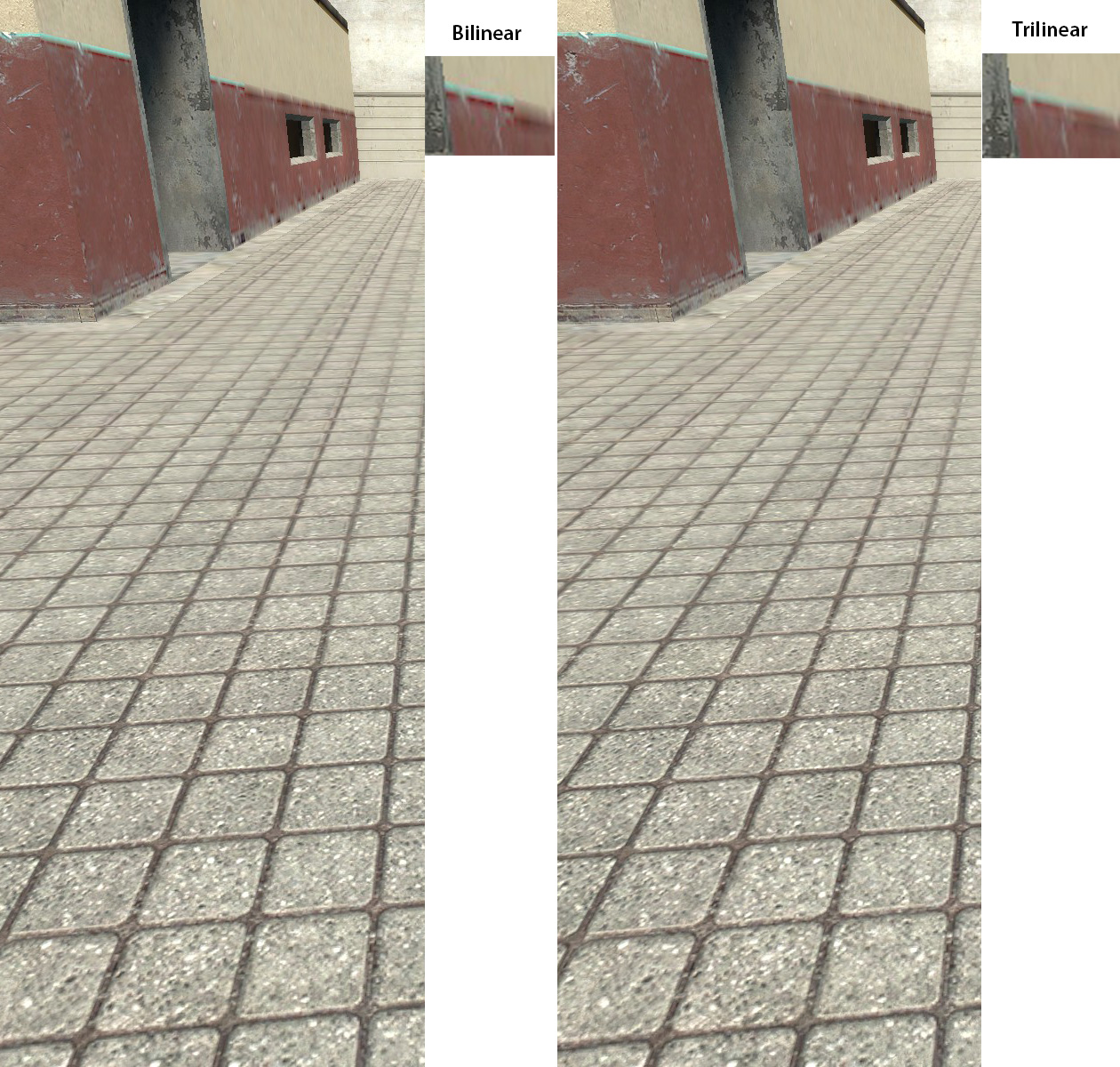Trilinear filtering is an extension of the bilinear texture filtering method, which also performs linear interpolation between mipmaps.
Invented by: unknown
1st use: unknown
Mainstream use: 1998+ - with 2nd gen of 3D accelerator cards
Used for: increasing image quality
Replaced by: Anisotropic filtering
Bilinear filtering used with Mipmapping have weakness when showing mipmap textures angled to camera. It produce vertical or horizontal lines (mostly seen on ground), where mipmapped textures meet each other. This line is visible as thin line in distance mostly when moving game avatar. Trilinear filtering interpolates between the results of bilinear filtering on the two mipmaps to remove these lines.
From early 1st gen cards only 3Dfx Voodoo 1 / Rush support Trilinear filtering. Other cards mostly support this since 2nd generation of cards (1997-1998). Here are few examples:
3Dlabs - Permedia 2
ATI - 3D Rage Pro
NVIDIA - RIVA 128
S3 - Savage3D
Trilinear filtering need more power from graphic card and on early cards was not much used by gamers. Only on highend cards. Even on 3rd generation of cards it lowers framerate by 5-8% (see test article in Quake 3 on xbit site). Due to limited image enhancements and higher requirements, it seen wide use on mainstream cards after year 2000 with releasing cheaper GeForce 2MX and Radeon cards.

Difference on static image is not big, but can be seen on line at wall between door and window. Trilinear filtered image have smoothered line between two mipmapped textures.
More info at:
Wikipedia
UnrealWiki
Tomshardware
Dev.mag
Xbit
You can also view video below showing differences between Bilinear, Trilinear and Anisotropic filtering.

